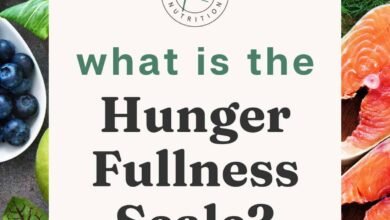Managing Endometriosis through Diet: What You Need to Know

For some young girls, getting their period is like having their first visit from the tooth fairy saying, “Congratulations – you’re a woman!” Unfortunately for others, period pain can feel like torture. These painful periods can be caused by a variety of different factors. One we will dig into deeper is how endometriosis is connected to the diet.
What is Endometriosis?
Cells from the lining of the uterus are meant to stay within it and shed each month through the menses phase of the menstrual cycle. When a person has endometriosis, the cells from the uterus lining grow in places throughout the body where they do not belong.
These rouge cells form lesions in those areas, which can be as close to the uterus as the fallopian tubes and the gut or reach as far as the brain. Once lesions form, the blood cannot move, causing the surrounding body tissues to become inflamed.
Symptoms of endometriosis include:
- Pain during the menses cycle in the pelvis, or intercourse
- Heavy or irregular bleeding
- Constipation before menses phase in the cycle
- At its worst, infertility
Though there is no certain cause of endometriosis, it is known that higher estrogen levels can contribute. The disease can also be exacerbated through any other inflammation within the body. Dysbiosis — or the imbalance of health-promoting bacteria to harmful bacteria — can weaken immune system function, increase inflammation, and contribute to endometriosis.
Endometriosis and Diet
Though much is unknown about the disease and most diagnosis and medical treatment of endometriosis includes surgery, nutrition can help with many of the underlying issues. Here are some ways you can implement these supportive tools in your wellness journey.
Identify Your Burdens: Allergens and Deficiencies
Since endometriosis is associated with inflammation, it is important to identify other potential factors that could be contributing to the inflammatory load.
Unresolved food allergies can be associated with inflammation and therefore contribute to endometriosis symptoms. Food allergy testing may be warranted. To learn more, check with your doctor.
Women with nutrient deficiencies in potassium, calcium, vitamin C, B2, and B12 had a higher risk of endometriosis in a recent study. A qualified Nutrition Therapist can help assess nutrient adequacy.
Interestingly in a 2012 study, 75% of women with endometriosis reported a significant decrease in their painful symptoms after eliminating gluten from their diet for a year. Gluten intolerances like celiac disease and non-celiac gluten sensitivity are associated with increased inflammation. Medical diagnosis of celiac disease requires testing by your doctor. Self-assessment for gluten intolerance can be done using an elimination diet to see if your symptoms improve.
Cool Inflammation
After identifying potential inflammation-associated culprits in the body, we can calm the immune system’s inflammatory response nutritionally by consuming omega-3 fatty acids and monounsaturated fats.
In a 2010 study, women who consumed more omega-3 fatty acids were less likely to be diagnosed with endometriosis compared to those with the lowest omega-3 consumption. To cool your inflammation, consider increasing omega-3 fatty acids in your diet. Great sources include:
- Fatty fish
- Walnuts
- Flaxseeds
- Sardines
Monounsaturated fats also can help calm inflammation. You can find these fats plentifully in:
- Olive oil
- Avocados
- Nuts
- Seeds
Because 70% of the immune system resides in the gut, taking probiotics to help balance gut flora can help optimize immune activity and reduce inflammation.
Love Estrogen — But Don’t Let It Overload You
Estrogen is an important hormone for our overall health for both women and men. Yet too much of it can cause a variety of issues, including endometriosis. In this case, estrogen dominance, or the dominance of estrogen over other essential hormones in the body, is linked to endometriosis.
How could someone — especially a woman — have too much estrogen? The truth is that estrogen is not only produced inside our bodies. It is present throughout our environment in a form called xenoestrogens, which look and act like estrogen once they get into the body. Accumulation of xenoestrogens can create an internal environment of excess estrogen and estrogen dominance. Here are just some of the places you might find these estrogen look-alikes:
- Conventional dairy products
- Pesticides
- Plastics
- Cosmetics
- Household cleaning products
- Fragrances
- Oral birth control
- Hormone replacement therapy
- Untreated water
If you want to reduce your body’s exposure to these endocrine-disrupting burdens, consider eliminating these products and, when applicable, replacing them with better alternatives. You can assess the safety of certain products using guidance from the Environmental Working Group or by looking for labels indicating they are free of xenoestrogens.
Watch Your Meat and Dairy
Animals raised using conventional methods are given hormones as growth promoters. The meat of these animals — particularly the fatty tissue — contains deposits of those hormones, which adds to our estrogenic hormone burden. To avoid this, consider consuming organic, pasture-raised, and grass-fed meat.
Limiting your red meat consumption to once a week or less could provide some benefits. In one study, women who consumed more than two servings of red meat per day had a 56% greater risk of endometriosis compared with those who ate less than one serving of red meat per week. Since this study did not differentiate between whether the meat was conventionally raised or organic and grass-fed, the risk may be lower when consuming higher-quality meat.
The same animals that are raised conventionally also pass along the hormones they receive through their milk. Conventional dairy products contain estrogen, and all dairy contains palmitic acid, which is associated with an increased risk of endometriosis. Consider consuming non-dairy alternatives.
Support Detoxification
No matter the source, all estrogen must be properly metabolized and go through detoxification in the liver to be eliminated through feces. If estrogen is not eliminated, it continues to contribute to estrogen dominance.
To optimize your body’s ability to metabolize estrogen, consider increasing your consumption of cruciferous vegetables:
- Brussels sprouts
- Broccoli
- Cauliflower
- Kale
- Turnips
- Cabbage
This family of foods contains substrates called I3C and DIM that support estrogen metabolism. Broccoli and Brussels sprouts contain an additional botanical extract that promotes the elimination of excess estrogen.
Soluble fiber helps the body ultimately eliminate estrogen through feces. Great sources of soluble fiber include:
- Flaxseed
- Pears
- Avocados
- Apples
- Brussels sprouts
- Sweet potatoes
- Oranges
Too much fiber, however, can cause bloating and gas, so make sure to consume these in moderation.
Alleviate Period Pain and Cramping
In addition to calming the inflammation, you can employ vitamins and minerals to help alleviate pain and cramping symptoms.
Magnesium is a natural muscle relaxer, which can directly help soothe painful cramps. Great sources include:
- Leafy greens
- Almonds
- Pumpkin seeds
B vitamins help convert essential fats into a form that is usable by the body. Without that proper conversion, the body can produce substrates that can cause more inflammation — often exacerbating the pain of endometriosis. Consider increasing foods rich in B vitamins:
- Liver
- Organic meat
- Avocado
- Egg yolks
- Pumpkin seeds
Bring Your Health to Your Kitchen
While endometriosis is a complex condition that requires medical attention, a holistic approach to symptom mitigation involves placing priority on nutrition and dietary choices. Here are some sumptuous ways to bring nutrient density to your plate:
As you savor these flavors, you can rest assured that the nutrients behind them are taking care of you in an important way – without you even trying.
Learn A Holistic Approach to Women’s Health
If you want to learn more about a holistic approach to women’s health and optimal wellness in general, NTI’s Nutrition Therapist Master Program could be a great fit. One of the courses in the curriculum is Nutritional Endocrinology and Reproductive Health, where students learn about the body’s hormonal system and the tools to identify root causes of hormone balance disruption. Empowered with the vision of a holistic approach, you too could provide supportive solutions for people seeking a natural approach to their health.
Related reading…
Love Your Fertility With These Preconception Nutrients
About the author: Lisa (Driscoll) Lopes is a certified Nutrition Therapist Master through NTI’s Nutrition Therapist Master Program. Having studied journalism and vocal performance in undergrad, she enjoys using her voice to share the benefits of living a holistic, integrated lifestyle in writing. You can find more of her writing in the Baltimore Sun, Classical Singer Magazine, Capital News Service, and FOCUS blog.
Image Sources:
Source link
#Managing #Endometriosis #Diet



